Rafael Benitez, Hicks and Gillett, and the Soul of Liverpool
Why Rafael Benitez’s Legacy at Liverpool Matters More Than Ever
On the night of 25 May 2005, Liverpool Football Club was reborn. That sentence might sound sentimental to some, but it is nothing short of true for those who lived through the years before and after Istanbul. The final whistle in the Atatürk Olympic Stadium didn’t just cap off the most staggering comeback in Champions League history; it reignited the soul of a club drifting for far too long.
That image of Rafael Benitez, standing defiantly on the touchline as his players clawed their way back from a 3-0 deficit against one of the greatest sides in European history, AC Milan, is not just iconic, it is symbolic. Rafa was more than a tactician. In that moment, he became a beacon for a club searching for relevance in an increasingly modernised and monetised footballing world. And in many ways, that miracle, what followed it, and who tried to capitalise on it, shaped Liverpool’s next decade.
To understand the magnitude of what Rafael Benitez achieved in Istanbul, you must first understand the state of Liverpool Football Club. The early 2000s were lean years in terms of silverware, vision, infrastructure and commercial acumen. Manchester United had surged commercially and competitively, expanding Old Trafford and its global footprint ruthlessly. Meanwhile, Liverpool’s club shop resembled something out of a time capsule, tucked away in the corner of a car park, offering key rings and mugs while rivals hawked megastores full of shirts and dreams.
David Moores, then chairman, was a man who cared deeply about the club, but he was also a man out of his depth in the new era of billionaire owners. He was a millionaire in a sport turning ferociously into a billionaire’s playground. Roman Abramovich’s arrival at Chelsea in 2003 confirmed that. Within months, Chelsea had spent £100 million on players. The message was clear: football had changed, and Liverpool were being left behind.
Enter Rafael Benitez, a Spanish manager whose cerebral, analytical approach had already earned him plaudits in Spain. When he arrived at Liverpool in 2004, few would have predicted he’d be guiding the club to a Champions League final within a year. Fewer still could have envisioned Istanbul. But Rafa wasn’t just managing footballers, he was managing legacy, expectation and limitations.
That night in Turkey is often reduced to a romantic narrative, but make no mistake, it was a masterclass in belief, discipline and tactical nous. While AC Milan boasted Kaka, Pirlo, Maldini and Shevchenko, Benitez inspired a side with Djimi Traoré in defence and Vladimir Smicer coming off the bench to score. He achieved beyond logic and reason, and it re-established Liverpool as a force in Europe overnight.
Yet Rafa’s reward for delivering the club’s fifth European Cup wasn’t stability. It was turbulence.
A long-promised new stadium was little more than steel drawings and unfulfilled press releases. While rivals expanded their commercial empires, Liverpool were trapped in Anfield’s romantic past and financial limitations. Moores and chief executive Rick Parry searched far and wide for investment, including talks with Thailand’s then-prime minister and Robert Kraft of the New England Patriots, but came up short. It wasn't just the players up against giants; the boardroom was, too.
The club needed serious investment. It required men with money and, critically, with understanding. Instead, we got Tom Hicks and George Gillett.
By early 2007, Liverpool fans were sold a new dream. The Americans swept in with big smiles and bigger promises: a new ‘spade in the ground’ within 60 days stadium plan, funds for transfers, respect for tradition. At a press conference inside Anfield’s trophy room, Gillett and Hicks presented themselves as saviours. Behind the scenes, however, neither man had the liquidity or intent to support the club as fans hoped.
And Rafa? He was kept on, not out of loyalty or footballing sense, but because he was a convenient figurehead. The owners knew little about the sport, even less about the culture. In one moment of grim humour, one of them was spotted swotting up on Liverpool's Wikipedia page before speaking to the press. This wasn’t stewardship. It was opportunism cloaked in charm.
The contrast between Benitez’s passion and planning versus the chaos above him could not have been starker. Rafa had delivered the club back to the summit of Europe. Now, he would have to fight to keep it there against not just opponents on the pitch, but incompetence and interference off it.
As the 2024/25 season ends, Arne Slot has guided Liverpool to their 20th league title, equalling Manchester United's historic tally. There is a renewed sense of pride coursing through the club. Jürgen Klopp handed over the baton a year ago with grace, and Slot has picked it up like a man born for the job. The Premier League trophy was lifted at Anfield, and in the stands stood Rafael Benitez, the ghost of miracles past, returning to watch the fruits of seeds he helped plant.
Younger fans, many of whom were children when Istanbul unfolded, should know this: without Rafael Benitez, without the defiance he symbolised in a crumbling second-half dressing room, without his strategic mind and quiet strength, Liverpool’s modern era may never have been possible.
FSG eventually replaced Hicks and Gillett, rescuing the club from the brink and providing stability and strategy. But it was Rafa who weathered the storm when the ship was leaking from every plank. His presence at Anfield this May was not just nostalgic; it was deeply symbolic.
Liverpool’s soul, for a time, rested in his hands.
Hicks, Gillett and the Debt That Almost Broke Liverpool
As Liverpool fans bask in the glow of a 20th league title, matching the all-time record held by Manchester United, it is vital to remember how close we came to oblivion. That’s not exaggeration. In the late 2000s, under the ownership of Tom Hicks and George Gillett, Liverpool Football Club was not just mismanaged, it was endangered. While Rafael Benitez desperately tried to construct a team capable of challenging the elite, those in the boardroom dismantled the club’s foundation.
This wasn’t merely about bad transfers or broken promises. It was about leveraged buyouts, financial brinkmanship and two men playing a billion-pound poker game with Anfield as their stake.
The trouble began with the deal itself. Hicks and Gillett didn’t buy Liverpool with their own money, they bought it with borrowed money. They promised a new stadium within 60 days and funds to back the manager. Instead, we got a web of loans where Liverpool was collateral, a classic leveraged buyout.
They repeatedly refinanced those loans, putting the club deeper in the red each time. At one point, over $40 million a year was leaving Liverpool just to pay interest. That money could have built stands, bought strikers, or even secured Rafa’s long-term plans for the academy and scouting networks. Instead, it was syphoned away to service debts we never asked for.
Rick Parry and David Moores, two men close to the club’s heart, fought to stop some more outrageous financial decisions, including efforts to load the debt onto the club’s books officially. But their resistance was no match for the toxic partnership of Hicks and Gillett, who were now locked in a private war over power and control. What started as a shared ambition quickly turned into a cold civil war.
Rafael Benitez was still tasked with delivering trophies. Imagine managing Liverpool during this time, working miracles on a budget while your employers siphoned money out the back door and undermined each other in public.
He couldn’t bring in key targets. He was questioned at every turn. He clashed with Hicks and Gillett over everything from transfers to autonomy. His authority was chipped away, his standing eroded, not by results but by the dysfunction around him.
In early 2008, a potential rescue plan emerged. Dubai attempted to buy the club. A deal was close. But Tom Hicks demanded a valuation for Liverpool that was beyond ludicrous. The Dubai group walked away. The supporters now began to mobilise. The Spirit of Shankly movement was born. They protested and raised awareness. “Yanks Out” banners filled the Kop.
When FSG eventually took over in 2010, buying the club out of the wreckage, they were greeted not with fireworks but with cautious relief. Debt had nearly crippled the club, and Benitez had been worn down and eventually forced out.
To their credit, FSG listened. They stabilised the finances. They gave structure to the chaos. Some will say their stewardship has not been perfect. But when you consider what came before, when you weigh them against Hicks and Gillett, their impact becomes much clearer.
Among the most striking images from the recent title win was the sight of Rafael Benitez at Anfield. He wasn’t there to steal headlines. But he stood shoulder to shoulder with Kenny Dalglish and Jurgen Klopp, and in that moment, his legacy was sealed not just in medals but in memory and sacrifice.
Financial Ruin and a Club Torn Apart
Spring 2009 should have been a moment of triumph. Rafael Benitez had led Liverpool to second in the Premier League, narrowly behind Manchester United. The football on the pitch was electric. The fans believed again. But beneath that optimism lay a brewing disaster. While Liverpool were chasing titles, Tom Hicks and George Gillett were dragging the club into financial ruin.
The loss that season, £55 million, was the largest in Liverpool's history. That figure alone, staggering as it is, fails to capture the scale of the calamity. This was a loss born not of ambition but of debt. Almost all of it was interest on loans taken out by Hicks and Gillett. Not only had they mortgaged the club to buy it, but they had also used further loans to fund transfers and stadium plans. Liverpool was becoming a financial shell, weighed down by obligations that could not be sustained.
By 2009, the Royal Bank of Scotland was growing increasingly alarmed. The pair owed around £350 million, most of it to RBS. The bank had tolerated refinancing attempts, but it could no longer ignore them.
Christian Purslow, a private equity banker with ties to RBS, was appointed managing director. His mission was clear: find new buyers. But Liverpool’s toxic ownership saga had already scared off the world’s wealthiest. The Middle East's Sheikh Mohammed bin Rashid Al Maktoum had walked away, frustrated by Hicks’s delusions of value and control. Instead, he had purchased Manchester City. In less than a year, City had begun a spending spree of over £100 million.
The contrast could not be starker. While City welcomed stars, Benitez was shopping from the discount aisle, forced to be “creative” with barely £2 million in the kitty.
Benitez, once the architect of Istanbul, was now being forced to negotiate transfer policy like a loan officer. His budget, previously based on transfer income and strategic investment, was redefined by Purslow. New player contracts and agent fees were deducted from a limited “player account.” He wanted Stevan Jovetić from Fiorentina. But the money wasn’t there. Worse still, Rafa’s frustration mounted when Jovetić later scored against Liverpool in the Champions League. It wasn’t just about a missed opportunity. It was a symbol of everything Rafa had been warning against.
Instead of strengthening the squad, Liverpool sold Xabi Alonso to Real Madrid for less than market value. The money was needed, not for reinvestment, but to pay debt. By the end of the window, only a little-known Greek defender, Sotirios Kyrgiakos, had arrived. It was a transfer period defined not by vision, but by survival.
Unsurprisingly, results deteriorated. Liverpool started the 2009-10 season with two defeats in their first three matches. The campaign quickly unravelled. Early exits followed, most notably from the Champions League. The wounds inflicted off the pitch were now visible on it.
The mood soured everywhere. Players turned on each other. Fans turned on the owners. Factions even formed within the stands, some urging unconditional support for the team, others demanding protest. It became not just a crisis of performance, but a crisis of identity.
It is easy to forget, now, what that chaos felt like. Each match wasn’t just about three points. It was about salvaging dignity. Rafa looked increasingly isolated. At times, he was less a manager than a shield, absorbing anger that wasn’t his to bear.
The low points were symbolic. A comical beach ball goal against Sunderland, wrongly allowed to stand, epitomised the farce Liverpool had become. Benitez’s disbelief on the touchline said it all.
Perhaps the most damning indictment of Hicks and Gillett’s tenure is not that they failed, it’s that they broke everything. The boardroom was at war, the dressing room was fractured, and even the supporters were fighting amongst themselves. Liverpool FC, once a unified family, was split on every level.
Benitez saw it coming. He knew the cracks were there. But he was left to plug holes with promises and workarounds. At times, he wasn’t just running a team. He was managing a collapse.
His line, reportedly muttered in despair, sums up the absurdity of the time: “I’m not a football manager anymore. I’m a bank manager.”
Even then, he fought on.
The Courtroom, the Clock, and the Final Battle for Liverpool
If Liverpool’s league triumph in May 2025 felt like destiny, then the courtroom battle of October 2010 was the thunderstorm that cleared the path. Supporters who remember it do so not with romance, but with a tension that still clings to the memory like cold sweat. It was not just about ownership. It was a fight for the club’s soul.
On the morning of 13 October 2010, Liverpool supporters gathered outside the Royal Courts of Justice in London. They held scarves and signs, their hopes pinned not on a manager or a player but on a judge. Inside, the club's future was being decided in cold legal language. Hicks and Gillett had lost control of the board, but they hadn’t given up. Their last weapon was litigation.
Liverpool’s rebel board, Martin Broughton, Christian Purslow and Ian Ayre, had agreed to sell the club to New England Sports Ventures (which later became Fenway Sports Group). Crucially, they believed NESV’s experience with the Boston Red Sox showed a respect for tradition and a pathway to recovery.
The board meeting that approved the sale had taken place without Hicks or Gillett in attendance. Both men refused to answer their phones. It was a power vacuum that allowed the others to act, and act they did.
As the judge read his verdict, text messages filtered out from inside the courtroom. “One-nil,” one supporter read aloud. Then “Two-nil.” Then “Three-nil.” The High Court had ruled in favour of the rebel board. The sale could proceed. The nightmare of Hicks and Gillett was finally ending.
Or so it seemed.
Within hours, Hicks and Gillett filed a counterclaim in Texas. A judge there temporarily blocked the sale. Hicks had arranged a last-minute deal with a hedge fund to borrow enough money to pay off RBS and retake control.
It became a race against time. With the RBS deadline approaching, the point at which the bank would recall its loan and potentially plunge Liverpool into administration, the board had to act swiftly. They returned to the High Court, where the judge slammed the actions of Hicks and Gillett as “unconscionable.” He ordered them to drop their injunction or face contempt.
They blinked.
On 15 October 2010, Hicks formally withdrew. But before Liverpool could celebrate, there was one final twist. With just minutes remaining before the RBS deadline, the board finalised the sale to NESV. The debts were paid, and the club was no longer under threat.
They did not go quietly. Hicks denounced the sale as “an epic swindle.” He launched a $1.6 billion lawsuit, which he lost repeatedly.
Roy Hodgson was removed in January 2011. Fans had never warmed to him. Behind the scenes, FSG worked methodically. They respected traditions, avoided reckless spending, and began building a sustainable platform.
Anfield was expanded. The club’s commercial operations flourished. Slowly, Liverpool rose again.
And now, in 2025, we see the result.
From that High Court ruling to a 20th league title under Arne Slot, Liverpool’s resurrection has been a long and winding road.
Benitez didn’t win every battle. But he helped ensure the war was never lost.
Slot’s Triumph, Rafa’s Legacy
On a warm May afternoon in 2025, Anfield erupted. Liverpool had claimed their 20th league title, levelling the record with Manchester United. In his debut season, Arne Slot guided the club to domestic glory. In the stands sat Sir Kenny Dalglish and Jurgen Klopp, both symbols of past eras of dominance.
But the sight that pulled a knot in my throat was of Rafael Benitez, quietly present, almost ghostlike among the giants. He wasn’t holding a trophy, and there were no chants for him at Anfield that day. Yet every success Liverpool now celebrates is etched with the fingerprints of what Rafa once endured.
His time as manager was turbulent. His achievements often came not despite adversity, but because of it. To understand Rafa’s contribution is to understand the difference between winning and surviving.
Hicks and Gillett never got it. They didn’t get the city, they didn’t get the supporters, and they certainly didn’t get Liverpool FC. They thought they were buying a sports team. What they bought was a cultural institution that demands more than money, more than marketing. It demands understanding.
They failed to embed themselves, listen, or lead. Their approach was transactional in a place that values tradition, opportunistic, where roots and relationships matter.
In contrast, while FSG has had missteps, ticket pricing protests, and European Super League flirtations, it has done something the previous owners never could: it has engaged. It has brought supporters into the decision-making process, sought advice, and worked with, not against, the fanbase.
This matters. At Liverpool, it’s not enough to own the club. You have to be part of it. Benitez knew that instinctively. Hicks and Gillett never learned it.
Many failed to grasp how much Rafa had built while everything around him was torn down. His scouting network reached into corners of Europe ignored by the Premier League. He modernised the academy, brought a continental approach to fitness and preparation, and insisted on a level of data analysis that was, at the time, mocked by parts of the British media.
Even as he clashed with the board and the press chipped away at his authority, Benitez was laying foundations. Some of the systems we see bearing fruit today were seeded in his time.
Arne Slot may have reaped the harvest, but Benitez planted when the soil was scorched.
If there is one lesson to be taken from that era, it is this: Liverpool cannot be run by outsiders who refuse to become insiders. Money alone is not enough. Vision alone is not enough. You must understand the responsibility of stewardship. You must get the emotion, the rhythm, the pulse of a club born from working-class roots and driven by a collective spirit.
Hicks and Gillett treated the club like a financial instrument. But Liverpool FC is not a franchise. It is a living, breathing extension of the city and its people.
FSG eventually grasped that, albeit under pressure. Their decision to involve supporters in dialogue and respect Anfield's cultural weight is why they’re still here. They learned. Hicks and Gillett never even tried.
This 20th title isn’t just a statistic; it’s a monument. It tells a story of modern brilliance under Klopp and Slot and the storm that Rafa Benitez weathered.
To younger supporters celebrating their first title win, understand this: there was a time when Liverpool nearly died. There was a time when we weren’t just losing matches, but losing our identity.
And standing amid the wreckage, trying to hold it all together with nothing but conviction, was a man from Madrid with a stubborn glare and a scholar’s mind.
So, while we sing the names of Salah and Van Dijk, we also nod in reverence to the past. Let us remember what Rafa endured, not just for glory, but for the survival of everything we now celebrate.
Liverpool are back on top. But the journey wasn’t straight. It was scarred, it was hard, and it was, at times, almost lost.
Rafa helped make sure we never forgot who we are.


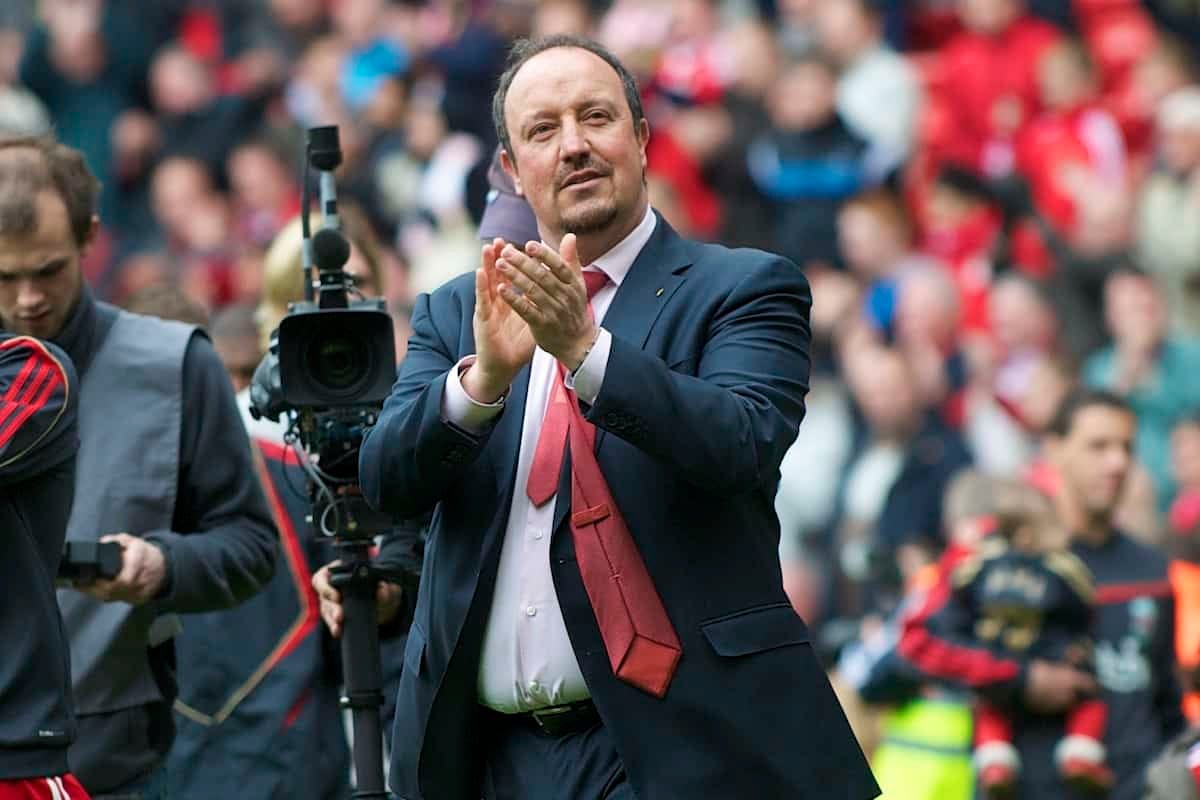
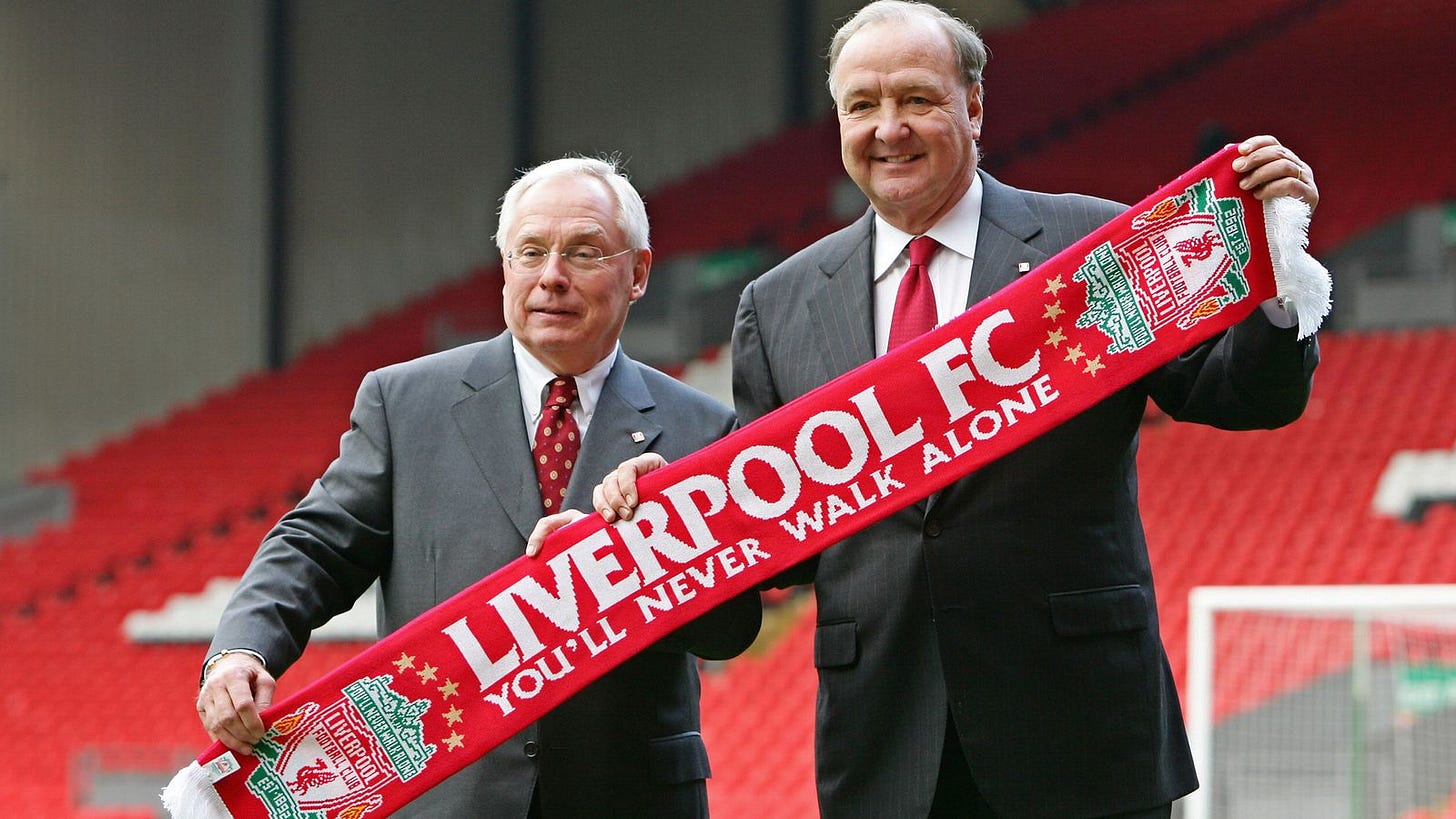
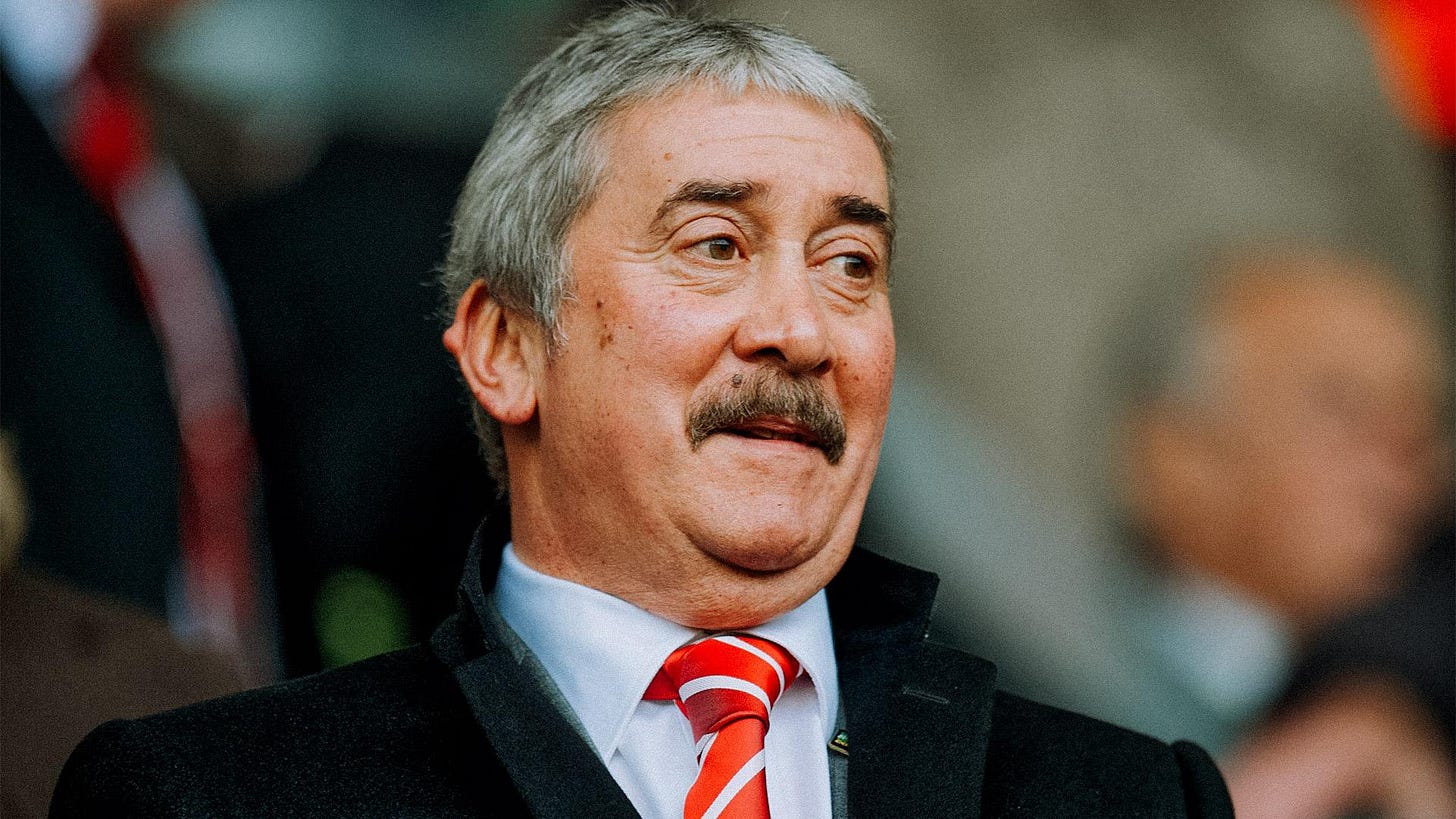

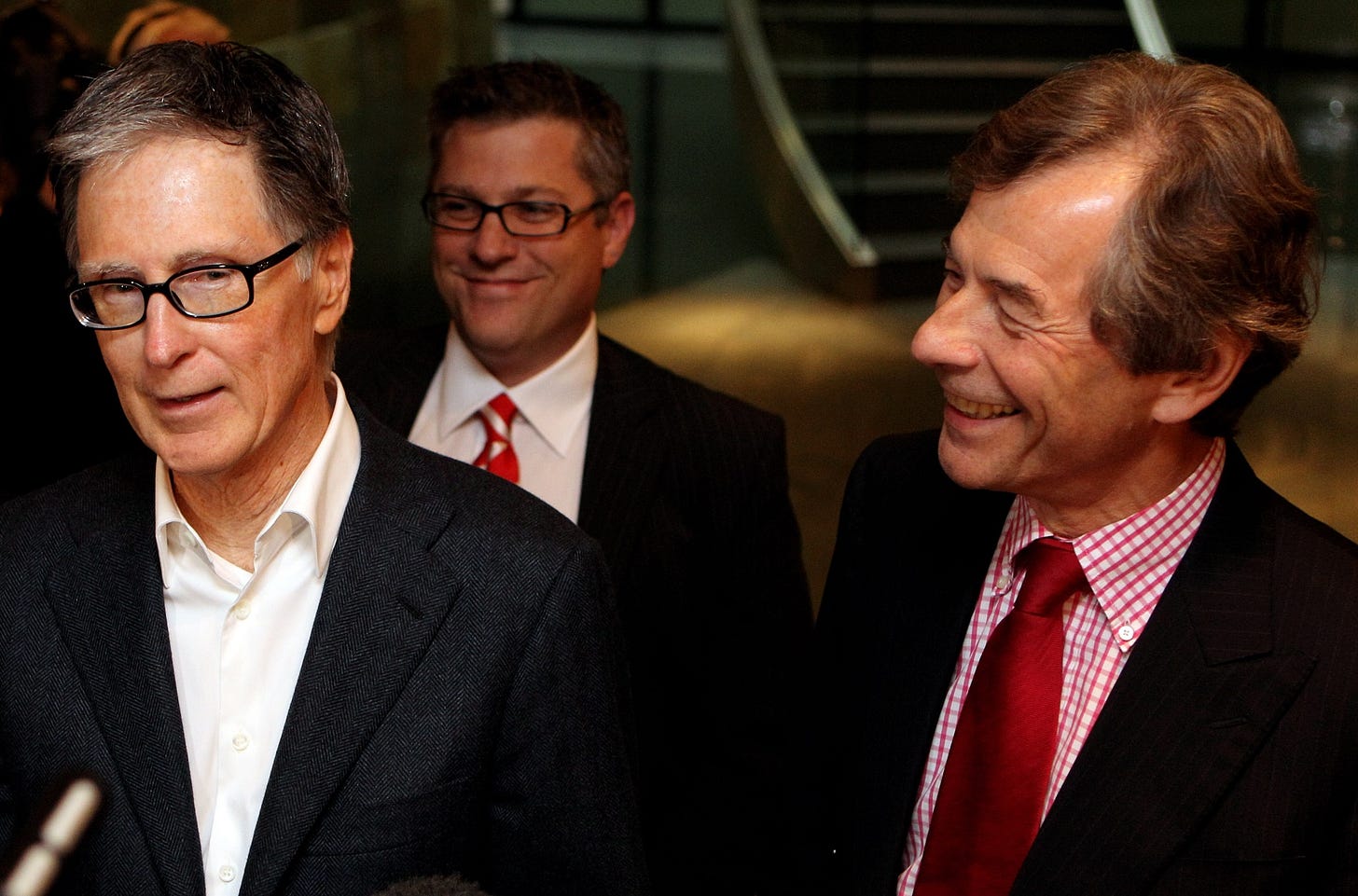
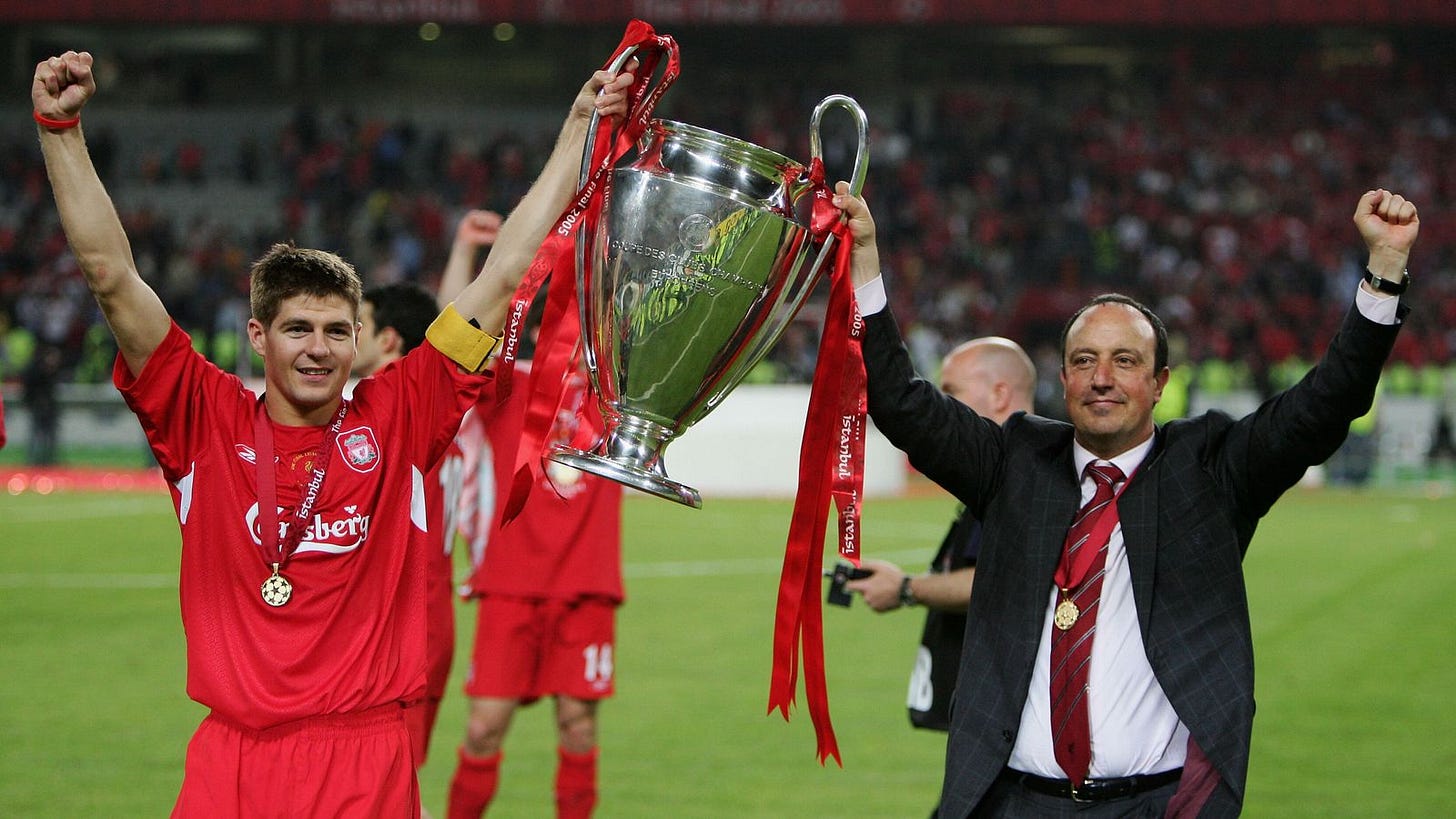
Super super article on a true great. The line ,,,he didn't win every battle but...helped ensure we never lost the war.. JUSt WOW
Wish I’d read this wonderful piece last summer. If Rafa had FSG at his back, our history would have been so, so different. A great coach, woefully underestimated in an English football landscape populated by idiots and Neanderthals. Thanks for writing this.